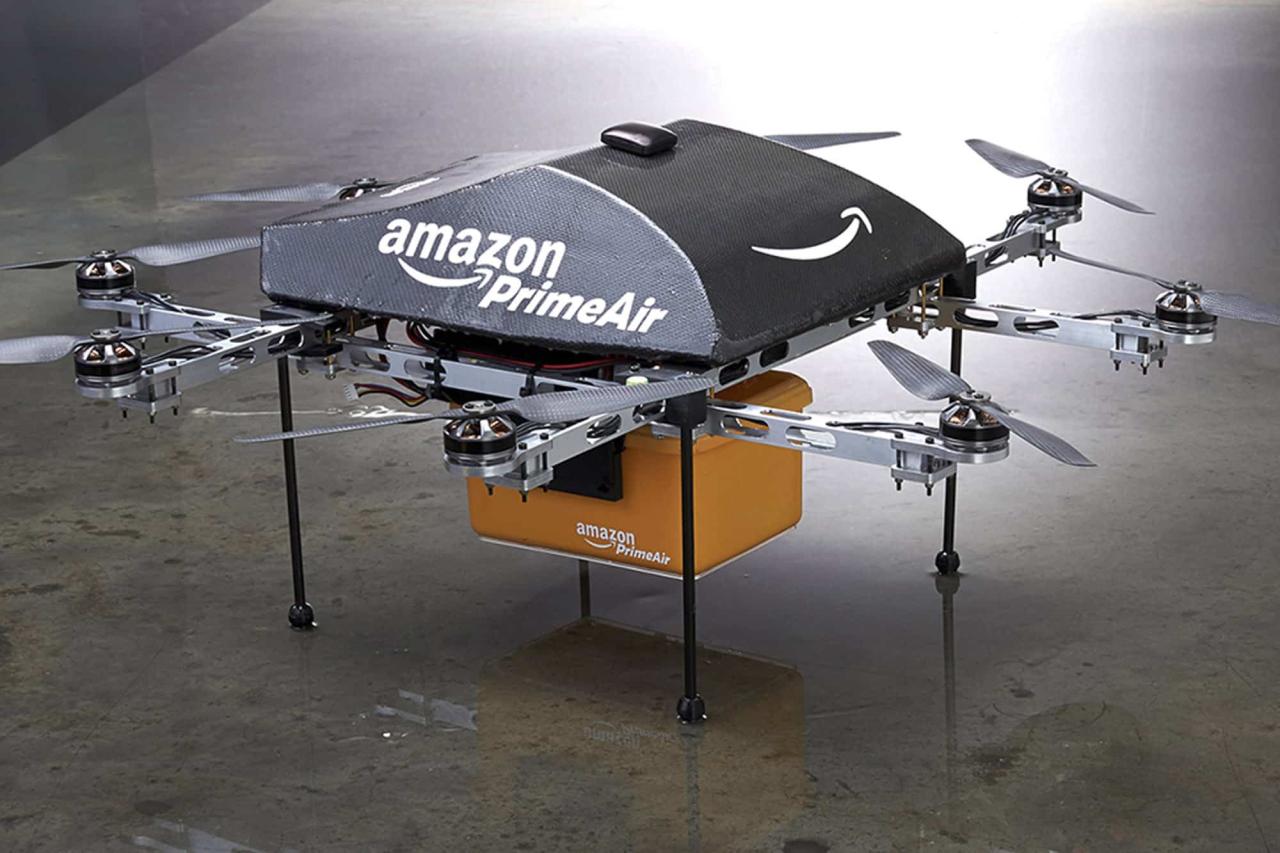Amazon drone delivery locations are expanding rapidly, revolutionizing how we receive packages. This isn’t just about faster delivery; it’s about optimizing logistics, reducing emissions, and exploring the potential of autonomous flight in a real-world setting. We’ll dive into the current locations, future expansion plans, and the factors shaping where Amazon chooses to deploy its drone fleet. Understanding these locations gives us a glimpse into the future of e-commerce and the ever-evolving landscape of delivery services.
This exploration covers the current operational areas, the selection criteria behind these locations, future expansion predictions, customer experiences, and the environmental impact of this innovative delivery method. We’ll examine the technology, regulations, and logistical hurdles involved, offering a comprehensive overview of Amazon’s ambitious drone delivery program.
Current Amazon Drone Delivery Program Status: Amazon Drone Delivery Locations
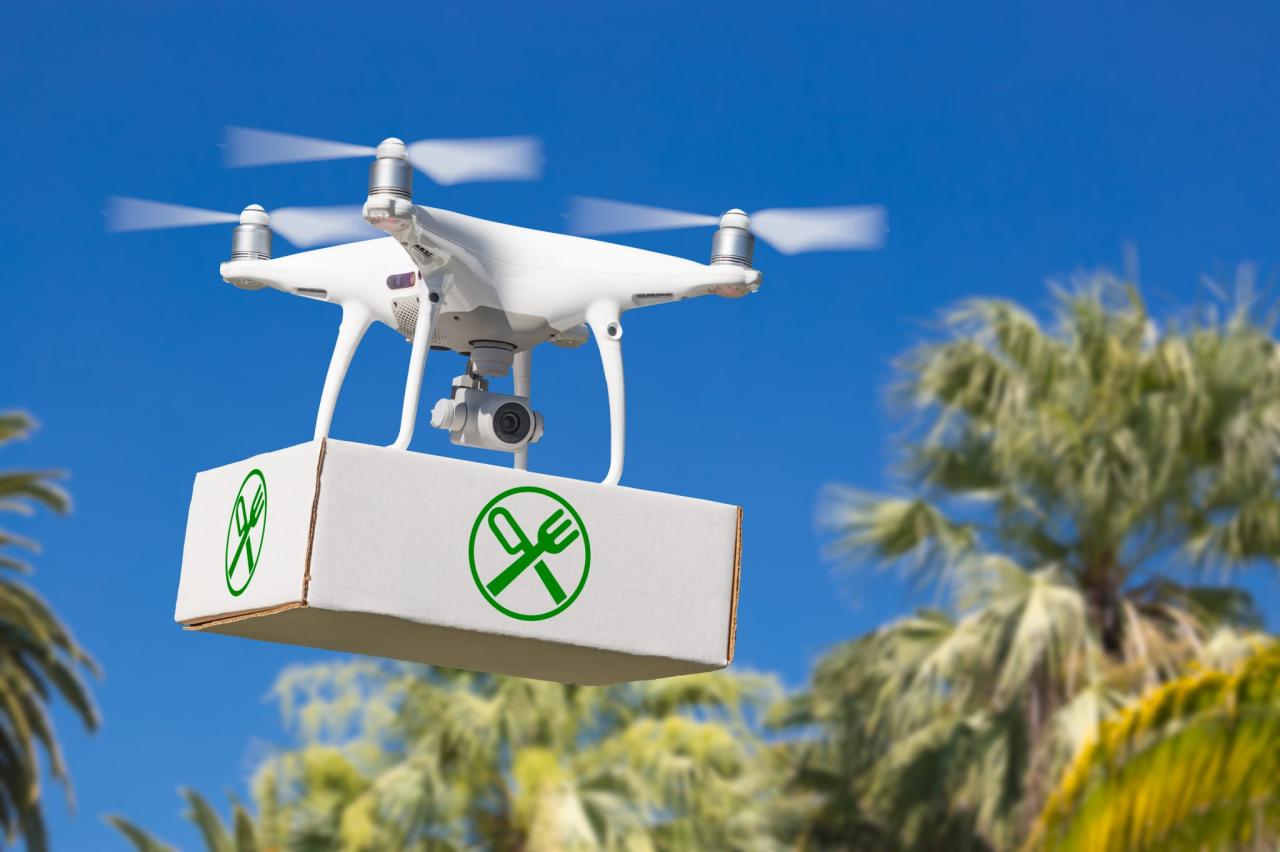
Amazon’s drone delivery program, officially known as Amazon Prime Air, is a steadily evolving initiative aiming to revolutionize package delivery speed and efficiency. While still in its relatively early stages, it’s making significant strides in several key areas, demonstrating the potential for widespread adoption in the future. This section details the program’s current status, including its geographical reach, package limitations, technological underpinnings, and competitive landscape.
Geographical Scope of Amazon Drone Delivery
Currently, Amazon Prime Air’s drone delivery service operates in a limited number of locations. These are primarily concentrated in the United States, with specific communities in Texas, California, and other states seeing active deliveries. The program’s expansion is gradual, focusing on areas with suitable infrastructure and regulatory approvals. Expansion to additional locations is dependent on several factors, including airspace regulations, community acceptance, and the successful completion of ongoing testing and development.
This controlled rollout allows Amazon to refine its operations and address potential challenges before scaling up significantly.
Amazon’s expanding drone delivery network is aiming for more locations, but safety is key. Recent incidents, like the one highlighted in this article about a paris drone crash , remind us of the challenges involved in widespread drone use. Therefore, the careful selection and monitoring of Amazon drone delivery locations are crucial for both efficiency and safety.
Eligible Package Types for Drone Delivery, Amazon drone delivery locations
Amazon Prime Air currently handles smaller, lighter packages. These typically include everyday items such as books, electronics, and smaller household goods. There are restrictions on package size and weight to ensure safe and efficient drone transport. Larger or heavier items remain outside the scope of the current drone delivery system, relying on traditional delivery methods. The types of packages eligible are continually reviewed and may change as technology improves and regulations evolve.
Technological Infrastructure Supporting Amazon’s Drone Delivery Network
Amazon’s drone delivery network relies on a sophisticated technological infrastructure. This includes a fleet of custom-designed drones equipped with advanced sensors and navigation systems, enabling autonomous flight and precise package delivery. The network also utilizes sophisticated flight planning software, air traffic management systems, and ground control stations to monitor and manage drone operations. Crucially, secure communication networks are vital for real-time data transmission and control of the drones.
Furthermore, robust data analytics are used to optimize flight routes, manage drone maintenance, and improve overall efficiency.
Comparison with Competitor Initiatives
Several other companies are pursuing similar drone delivery initiatives, though none have achieved the same scale of operation as Amazon. While direct comparisons are difficult due to varying operational strategies and disclosed information, it’s clear that the field is competitive. Companies like Google’s Wing and UPS Flight Forward are notable competitors, each with its own approach to drone delivery technology and operational strategies.
The market is still developing, and the long-term success of each program will depend on factors like regulatory approvals, technological advancements, and public acceptance.
Amazon Prime Air Operational Data
| Location | Launch Date (Approximate) | Package Size Limits (Approximate) | Special Conditions |
|---|---|---|---|
| College Station, Texas | 2019 | Under 5 lbs, small packages | Limited delivery area, specific residential zones |
| Lockeford, California | 2020 | Similar to College Station | Rural area, limited population density |
| Other Locations (Expanding) | Ongoing | Subject to change with technological advancements | Specific regulatory approvals required in each area |
Factors Influencing Drone Delivery Location Selection
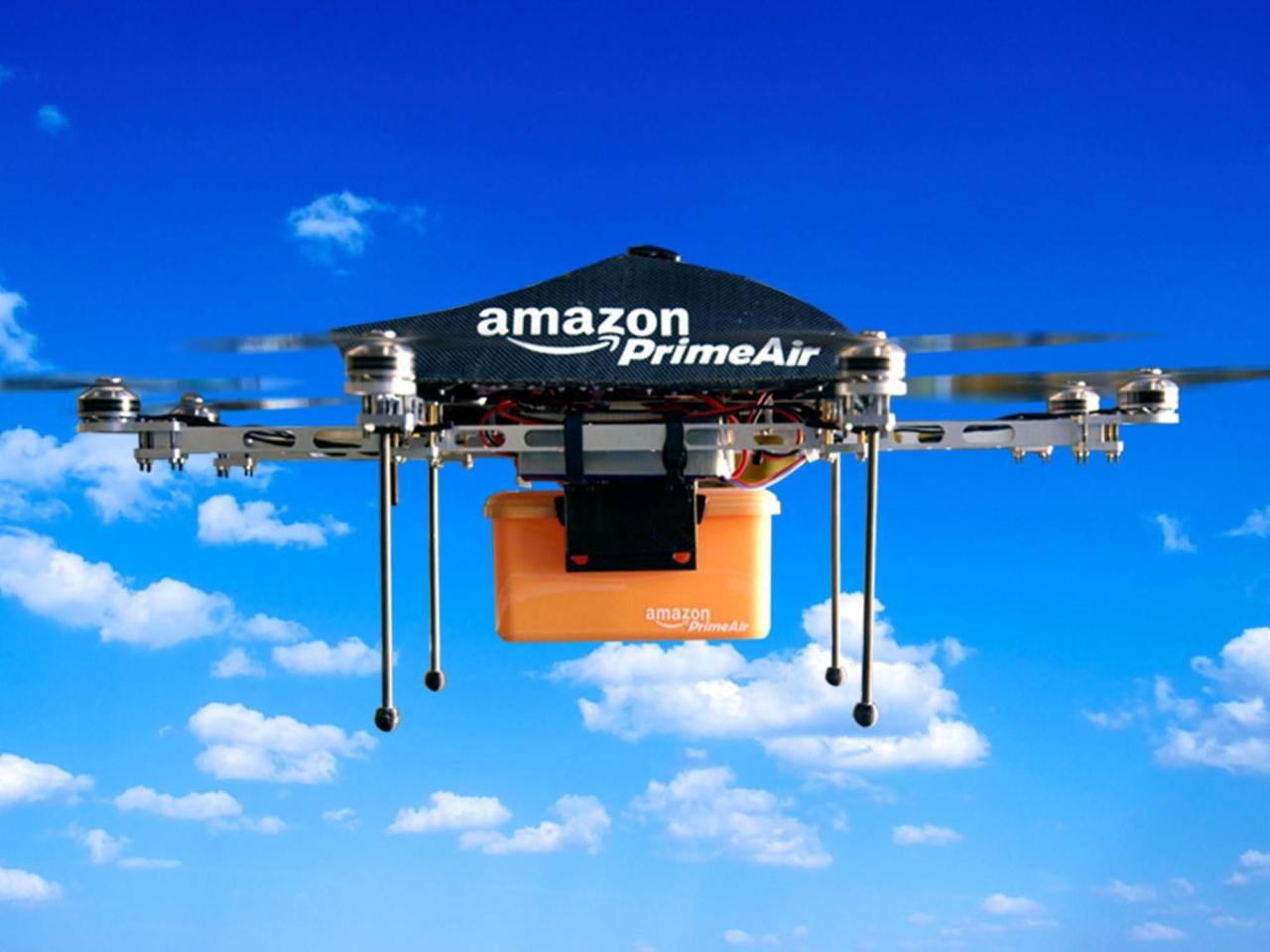
Amazon’s drone delivery program, while ambitious, isn’t a simple matter of launching drones anywhere. Careful consideration goes into selecting locations, balancing operational efficiency with regulatory compliance and community needs. Several key factors heavily influence where Amazon chooses to deploy its drone fleet.
Amazon’s expanding drone delivery locations are pretty cool, aiming for faster and more efficient shipping. However, the recent news about drone crashes in Paris highlights the safety challenges involved in widespread drone use. This underscores the need for robust safety protocols as Amazon continues to develop its drone delivery network.
Population Density and Delivery Zone Determination
Population density plays a crucial role in determining suitable delivery zones. High-density areas like suburbs offer a large customer base concentrated within a relatively small geographical area, making efficient route planning easier and maximizing the number of deliveries per flight. However, navigating congested airspace and adhering to strict urban flight regulations poses significant challenges. Conversely, lower-density areas like rural communities present logistical hurdles due to wider delivery distances, requiring longer flight times and potentially impacting the overall delivery speed and cost-effectiveness.
The ideal scenario for Amazon involves a balance – areas with sufficient population density to justify the operational costs, yet with airspace that is manageable for drone operations.
Local Regulations and Airspace Restrictions
Local regulations and airspace restrictions are paramount. Federal Aviation Administration (FAA) regulations, along with local ordinances, significantly impact location selection. Areas with established drone flight corridors or designated low-altitude airspace are more favorable. Conversely, locations with heavy air traffic, military installations, or strict no-fly zones are immediately excluded. The process involves thorough assessment of airspace availability, ensuring compliance with all applicable regulations, and obtaining the necessary permits and approvals.
For example, a location near a busy airport might be unsuitable due to safety concerns and airspace restrictions, while a location with open airspace and fewer regulatory hurdles would be more attractive.
Logistical Challenges: Urban vs. Rural Deployments
Urban and rural drone delivery present distinct logistical challenges. Urban environments, while offering dense customer bases, pose difficulties due to obstacles like buildings, trees, and unpredictable weather patterns. Drone navigation in such environments requires advanced sensor technology and sophisticated flight planning algorithms. Rural deployments, on the other hand, face challenges related to wider delivery distances, sparsely populated areas leading to lower delivery density, and potential infrastructure limitations.
For instance, a rural location might require longer flight times and more robust drone batteries, while an urban area might require more advanced obstacle avoidance systems. Amazon must tailor its drone technology and operational strategies to effectively manage these contrasting environments.
Advantages and Disadvantages of Various Location Types
The suitability of a location for drone delivery hinges on a complex interplay of factors. Let’s consider the pros and cons of different location types:
- Suburban Areas:
- Advantages: High population density, relatively open airspace, established infrastructure.
- Disadvantages: Potential for airspace congestion, obstacles like trees and buildings.
- Rural Areas:
- Advantages: Open airspace, fewer regulatory hurdles.
- Disadvantages: Low population density, longer delivery distances, potential infrastructure limitations.
- College Campuses:
- Advantages: Defined geographic area, high concentration of potential customers, potential for partnerships with institutions.
- Disadvantages: Potential for airspace restrictions, limited delivery radius.
Future Expansion Plans and Predictions
Amazon’s drone delivery program, while still in its relatively early stages, holds immense potential for expansion over the next five years. Success will hinge on technological advancements, regulatory changes, and careful consideration of logistical and infrastructural needs. Predicting the exact scope of expansion is challenging, but based on current trends and projected technological capabilities, a reasonable outlook can be formulated.
The next five years will likely see a significant increase in both the geographical reach and operational capacity of Amazon’s drone delivery network. This expansion will not be uniform, but rather strategically focused on areas where the technology is most readily deployable and the regulatory landscape is most favorable. This will involve a multifaceted approach, balancing technological readiness with economic viability and regulatory compliance.
Projected Expansion Areas
The most likely areas for expansion within the next five years include suburban and rural communities with good infrastructure but limited access to rapid delivery services. These areas often present logistical challenges for traditional ground-based delivery methods, making them ideal candidates for drone delivery. We can anticipate a focus on areas with relatively flat terrain and minimal obstacles, reducing the complexity of drone navigation and flight planning.
Think of areas like the expanding suburbs surrounding major metropolitan areas in the US and similar regions in other countries with supportive regulatory environments. We can also anticipate expansion into areas with a higher density of Amazon Prime subscribers, maximizing the efficiency and economic viability of the drone delivery network. For example, a hypothetical expansion into a region like the sprawling suburbs of Austin, Texas, could be a key target due to its combination of population density, relatively flat terrain, and existing technological infrastructure.
Technological Advancements for Wider Coverage
Expanding geographical coverage requires several key technological advancements. Improved battery technology is crucial to extend flight range and payload capacity. This would allow drones to cover larger distances and deliver heavier packages. Simultaneously, more sophisticated autonomous navigation systems, capable of handling challenging weather conditions and complex airspace, are essential. This includes improved obstacle avoidance systems and the ability to operate safely in close proximity to other aircraft.
The development of robust drone traffic management systems (UTM) is also paramount to ensure the safe and efficient integration of drones into existing airspace. Advancements in drone design, including more resilient and weatherproof designs, will also be critical for reliable operations in diverse geographical locations. For instance, the development of drones capable of vertical take-off and landing (VTOL) in confined spaces would enable delivery to more densely populated areas.
Impact of Evolving Regulations
The regulatory landscape will significantly influence Amazon’s expansion plans. Favorable regulations, including streamlined airspace access and clear operational guidelines, will accelerate growth. Conversely, stringent or inconsistent regulations across different regions could hinder expansion efforts. The ongoing development and implementation of national and international standards for drone operations will be critical. This includes establishing clear rules for drone identification, registration, and safety protocols.
For example, the successful integration of drones into national airspace systems, like those currently under development in various countries, would drastically improve operational efficiency and expand delivery zones. Conversely, inconsistent or overly restrictive regulations in certain regions could severely limit Amazon’s ability to expand its drone delivery service.
Hypothetical Future Drone Delivery Zones
Imagine a map of the United States. Several key zones illustrate potential future drone delivery areas.Zone 1: Suburban Rings of Major Cities – This zone encompasses the rapidly expanding suburbs around major metropolitan areas like Atlanta, Dallas, and Denver. These areas have a high density of Amazon customers and relatively flat terrain, making them ideal for initial expansion.Zone 2: Rural and Underserved Communities – This zone targets rural areas with limited access to fast delivery services.
Regions in the Midwest and Southwest, characterized by less dense populations and less complex airspace, would be prioritized.Zone 3: College Campuses and Corporate Parks – This zone focuses on delivering packages to campuses and office parks with defined perimeters and limited airspace complexity.Zone 4: Coastal Areas (with limitations) – This zone represents a more challenging area, requiring drones with advanced weather-resistant capabilities and sophisticated navigation systems to handle coastal winds and potentially more complex airspace due to proximity to airports.These zones are interconnected, reflecting a phased approach to expansion, starting with areas of lower complexity and gradually progressing to more challenging environments as technology improves.
Economic and Social Impact of Expanded Drone Delivery
Expanded drone delivery services will likely create new jobs in drone maintenance, operation, and related support services. It could also lead to increased efficiency and reduced delivery costs for businesses and consumers, especially in remote areas. However, there are potential social implications, including concerns about job displacement in the traditional delivery sector and the need for appropriate safety regulations to mitigate potential risks.
The economic impact will be a net positive, with increased efficiency and accessibility offsetting potential job losses through the creation of new roles within the drone delivery industry itself. Socially, improved access to goods and services, particularly in underserved areas, will be a significant positive impact.
Customer Experience and Feedback
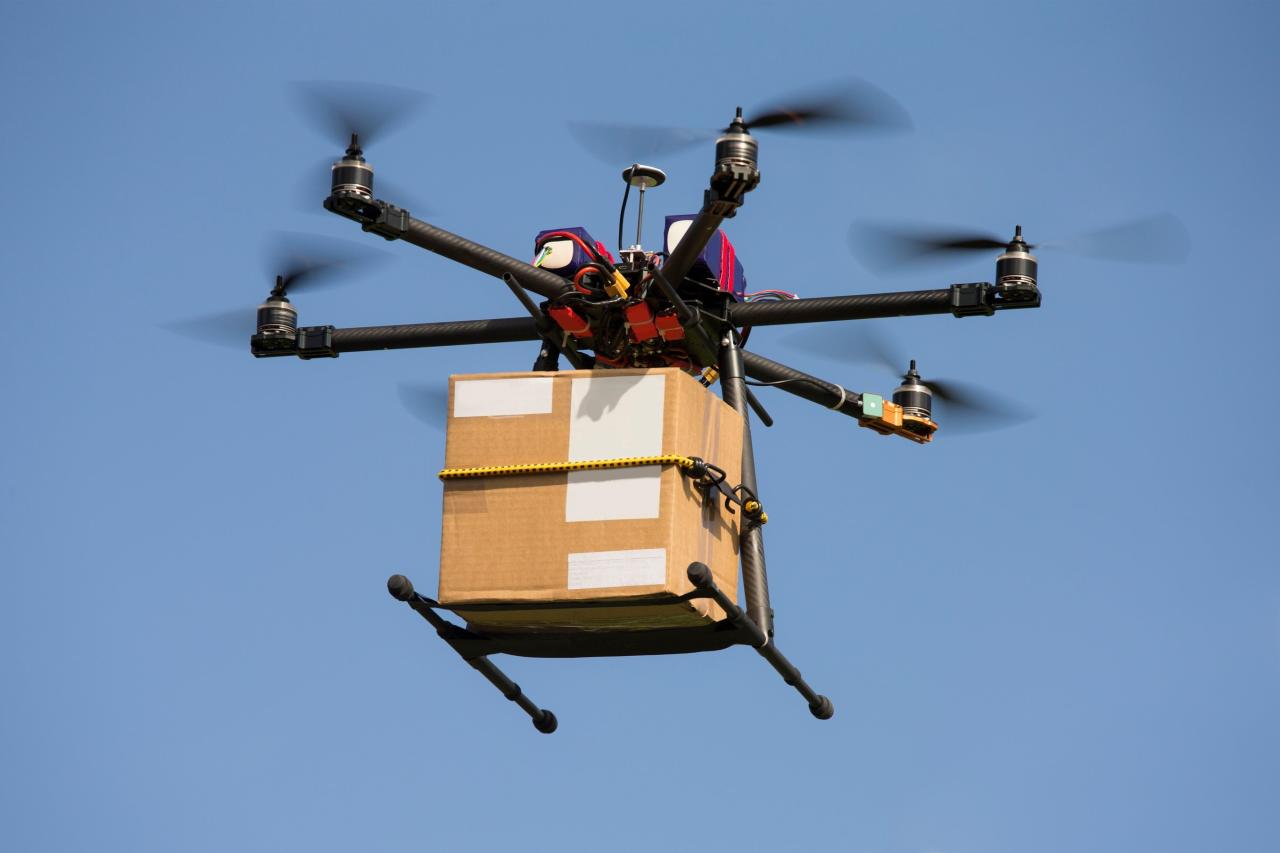
Amazon’s drone delivery service offers a unique customer experience, differing significantly from traditional shipping methods. While still in its relatively early stages, the program provides valuable insights into the future of last-mile delivery. Understanding customer perceptions is crucial for Amazon’s continued success and expansion of this innovative service.The typical customer experience begins with an order eligible for drone delivery.
Customers receive a notification when a drone is dispatched and can track its progress via the Amazon app. Upon arrival, the drone autonomously lowers the package, typically using a tether system, to a designated location on the customer’s property. The customer then retrieves the package. This process is generally quick and efficient, offering a level of convenience not readily available with traditional shipping.
Advantages and Disadvantages of Drone Delivery from a Customer Perspective
Drone delivery offers several key advantages. The speed and efficiency are major draws, with deliveries often arriving within minutes or hours of order placement, significantly faster than ground shipping. The convenience of having the package delivered directly to a designated spot on the property, eliminating trips to a pick-up location or waiting for a delivery driver, is another plus.
However, there are disadvantages. The service’s limited geographical availability restricts access for many customers. Weather conditions can also impact delivery times or even prevent delivery altogether. Finally, concerns about package security and the potential for loss or damage, though mitigated by Amazon’s systems, remain a factor for some customers.
Methods Used by Amazon to Gather Customer Feedback
Amazon employs various methods to gather customer feedback on its drone delivery service. Post-delivery surveys sent via email or in-app notifications are a primary method, allowing customers to rate their experience and provide detailed comments. Amazon also utilizes customer service interactions, both proactive and reactive, to understand customer issues and gather qualitative feedback. This includes analyzing calls, emails, and chat logs to identify trends and areas for improvement.
Furthermore, social media monitoring plays a role in identifying public sentiment and addressing customer concerns.
Comparison of Customer Satisfaction Ratings
Direct comparison of customer satisfaction ratings between drone delivery and traditional shipping methods is difficult due to the limited scale of the drone delivery program and the lack of publicly available comprehensive data. However, anecdotal evidence and early reports suggest that customer satisfaction with drone deliveries is generally high, particularly regarding speed and convenience. Traditional shipping, while reliable for many, often suffers from longer delivery times and less flexibility.
A more comprehensive comparison requires further expansion of the drone delivery program and more publicly accessible data.
Customer Testimonials
“The drone delivery was incredibly fast! I ordered my book at lunchtime and it was on my porch within two hours. Amazing!”
Sarah J.
“It was so cool to watch the drone deliver my package! The whole process was seamless and efficient. I’ll definitely use this service again.”
Michael B.
“While the speed was great, I was a little nervous about the package being left unattended. Hopefully, security measures will improve.”
Emily K.
These testimonials highlight the key themes of speed, convenience, and security concerns associated with Amazon’s drone delivery service. The positive experiences generally outweigh the negative, indicating a strong potential for future growth and adoption.
Environmental Impact and Sustainability
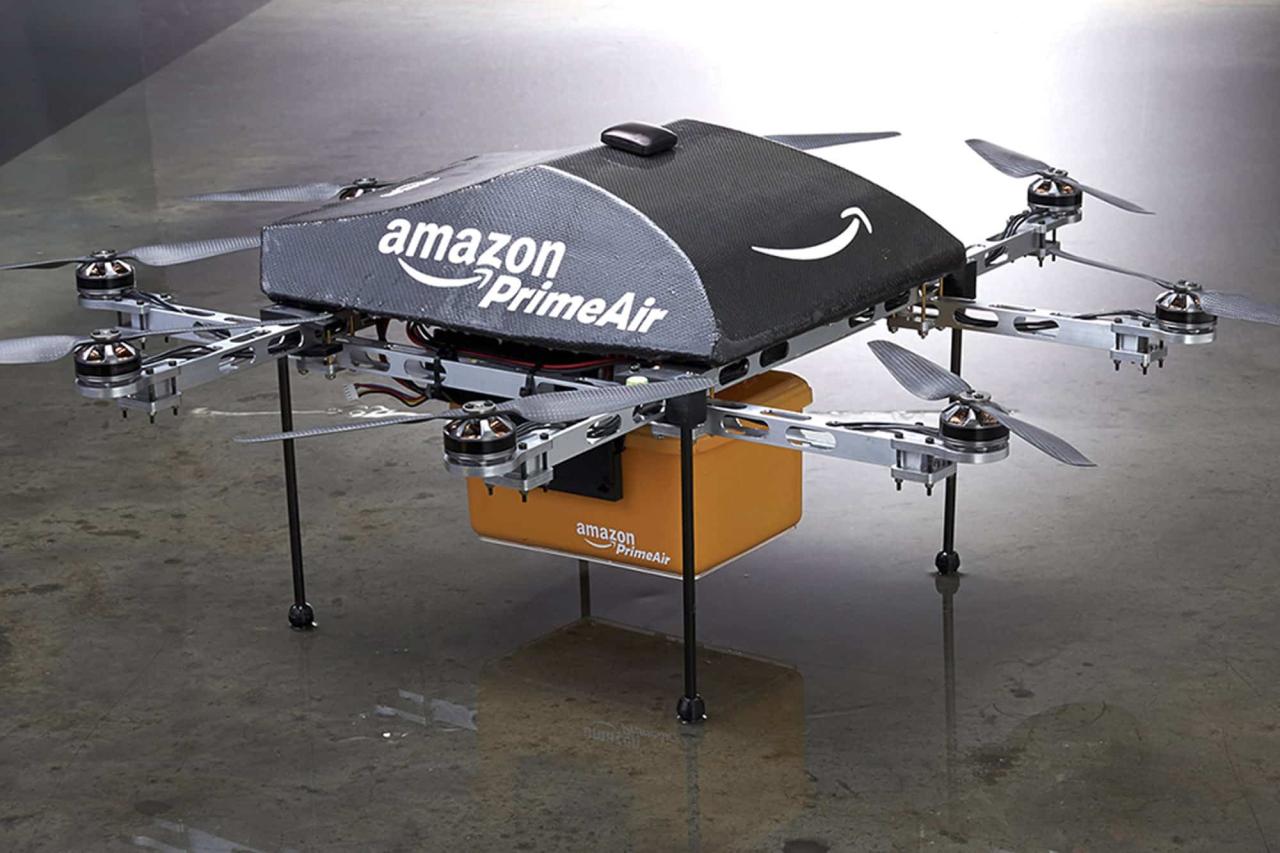
Amazon’s drone delivery program, while offering speed and convenience, raises important questions about its environmental impact. Understanding the energy consumption, carbon emissions, and overall ecological footprint is crucial for evaluating the long-term viability and sustainability of this technology. This section explores these aspects, examining Amazon’s efforts to mitigate negative effects and comparing drone delivery to traditional methods.
Energy Consumption and Carbon Emissions of Drone Delivery
The environmental impact of drone delivery is primarily linked to energy consumption and subsequent carbon emissions. Electric drones, while cleaner than gasoline-powered alternatives, still require significant battery power for operation, charging, and manufacturing. The electricity used for charging contributes to the overall carbon footprint, especially if sourced from non-renewable energy sources. Furthermore, the manufacturing process of drones involves resource extraction and energy-intensive manufacturing processes, adding to the overall environmental burden.
So you’re curious about where Amazon’s delivering packages via drone, huh? It’s pretty cool tech! To get the lowdown on exactly which areas are currently part of their drone delivery program, check out this helpful resource on amazon drone delivery locations. Knowing these locations helps you understand the rollout and future possibilities of this exciting delivery method.
Amazon drone delivery locations are expanding, so keep an eye out!
The weight of the drone and the distance traveled directly influence energy consumption and therefore, the carbon emissions generated. For example, a heavier drone carrying a larger package over a longer distance will naturally consume more energy and produce more emissions compared to a lighter drone on a shorter route. Accurate assessment requires detailed analysis of energy sources, drone specifications, flight distances, and package weights.
Amazon’s Initiatives to Reduce Environmental Impact
Amazon has acknowledged the environmental concerns and is actively pursuing strategies to reduce the environmental footprint of its drone delivery operations. These initiatives include investing in more energy-efficient drone designs, exploring the use of renewable energy sources for charging infrastructure, and optimizing flight routes to minimize energy consumption. They are also focusing on lightweight drone designs and packaging materials to reduce the overall weight and energy demand per delivery.
Further initiatives involve exploring the use of sustainable materials in drone manufacturing and implementing robust battery recycling programs. The company’s commitment to carbon neutrality is a broad overarching goal influencing all aspects of its operations, including drone delivery.
Comparison of Drone Delivery and Traditional Delivery Methods
A comprehensive comparison of drone delivery’s environmental impact against traditional delivery methods reveals a complex picture. While traditional delivery trucks often have higher per-package emissions due to fuel consumption and idling, drones face challenges related to battery production and charging infrastructure. A visual representation, in the form of a bar chart, could effectively compare several key metrics. The chart would have two bars for each metric: one for drone delivery and one for traditional delivery.
Metrics included would be: total carbon emissions per package, energy consumption per package, resource consumption for manufacturing and operation, and packaging waste generated. For example, the bar chart would visually demonstrate that while drone delivery might show lower total emissions per package for shorter distances, the emissions associated with manufacturing and battery production could potentially offset this advantage for longer distances.
Traditional delivery methods, however, might show higher emissions per package, but a potentially lower overall impact when considering the extensive existing infrastructure. The results would vary depending on several factors, including distance, package weight, and energy source.
Future Innovations for Enhanced Sustainability
Several promising innovations hold the potential to significantly enhance the environmental sustainability of drone delivery. The development of more energy-dense and recyclable batteries is crucial. Advances in drone design, incorporating lighter materials and more efficient propulsion systems, will also play a significant role. Furthermore, integrating drones into a broader, more sustainable transportation ecosystem, such as utilizing renewable energy sources for charging and integrating drone delivery into existing delivery networks, will further enhance efficiency and reduce environmental impact.
The exploration of autonomous charging stations, powered by renewable energy, could also significantly reduce the carbon footprint associated with charging. Finally, the development of advanced air traffic management systems to optimize flight paths and minimize energy expenditure is also key.
Closing Summary
Amazon’s drone delivery program is more than just a futuristic concept; it’s a rapidly evolving reality. While challenges remain, the potential benefits – from faster delivery times and reduced environmental impact to enhanced customer experience – are undeniable. As technology advances and regulations adapt, we can expect to see even greater expansion and integration of drone delivery into our daily lives.
The future of package delivery is taking flight, and Amazon is leading the charge.
Quick FAQs
What types of packages can be delivered by Amazon drones?
Currently, Amazon drones deliver smaller packages, generally those weighing under 5 pounds. The exact size and weight limits may vary depending on the location.
How long does a drone delivery typically take?
Drone delivery times are usually much faster than traditional shipping, often taking only 30 minutes to an hour, depending on distance.
Is drone delivery more expensive than traditional shipping?
Currently, Amazon doesn’t charge extra for drone delivery; it’s integrated into their standard shipping options for eligible items and locations.
What happens if there’s a problem with my drone delivery?
Amazon has customer service protocols in place for drone deliveries, similar to their standard shipping processes. You can track your package and contact support if needed.
